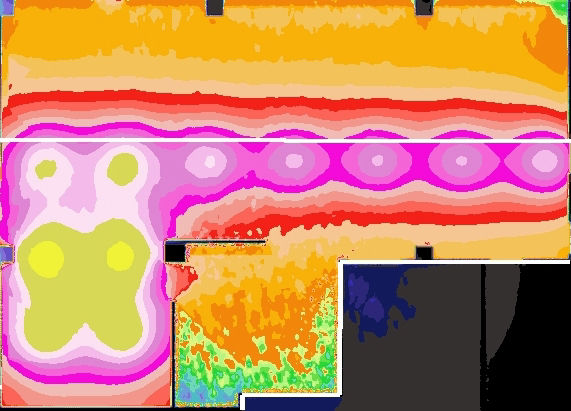
Discomfort, pleasantness and qualitative-quantitative studies
These expertise focus on the analysis of situations where users in spaces feel a discomfort due to natural light.
In these situations, our studies include measurements of light in mixed lighting, the detection of luminance contrasts, technical and qualitative analyses to discover the sources of the discomfort.
We simulate the current situation (as on the image on the left) to validate the discomfort and its sources.
We define possible improvements with the client and simulate them to measure their efficiency.
We explain the alternatives and their impact on spaces and users.
Such expertise have been conducted in post anesthetic halls in hospitals, in bedrooms, in workspaces, banks, etc.
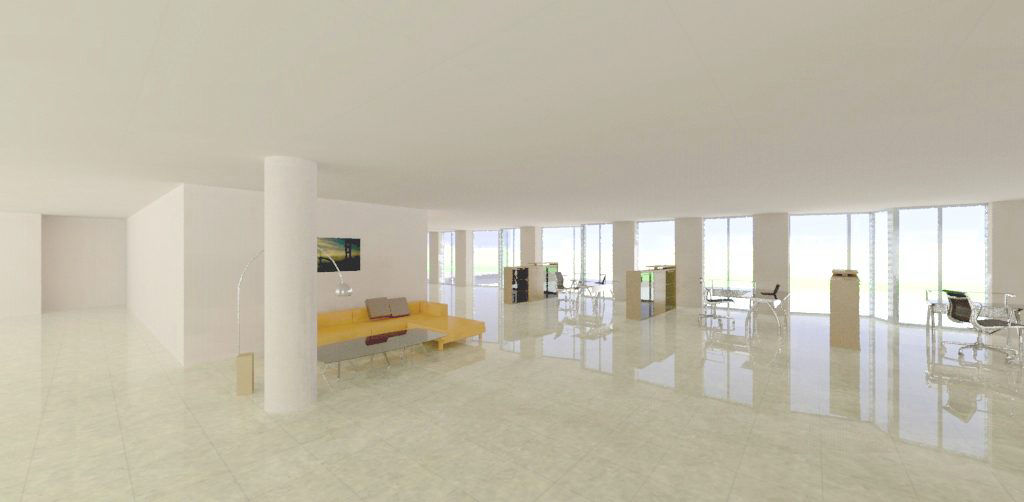
The distribution of luminance in the spaces is an essential element of the comfort and of pleasantness for users and plays an important role in the well-being and productivity.
Beyond the well-defined certification studies, De Luminæ analyses luminous ambience in Daylighting, in particular in the design phase of projects to determine:
- The characteristics of ambiences in the future spaces
- The correspondance between ambience and intentions from designers, clients and future users
De Luminæ researches the best balance between optimisation of energy consumption, improvement of luminous comfort and the architectural intentions.
De Luminæ contributed to such studies in office spaces, hospitals, banks, schools, prestigious halls, etc.
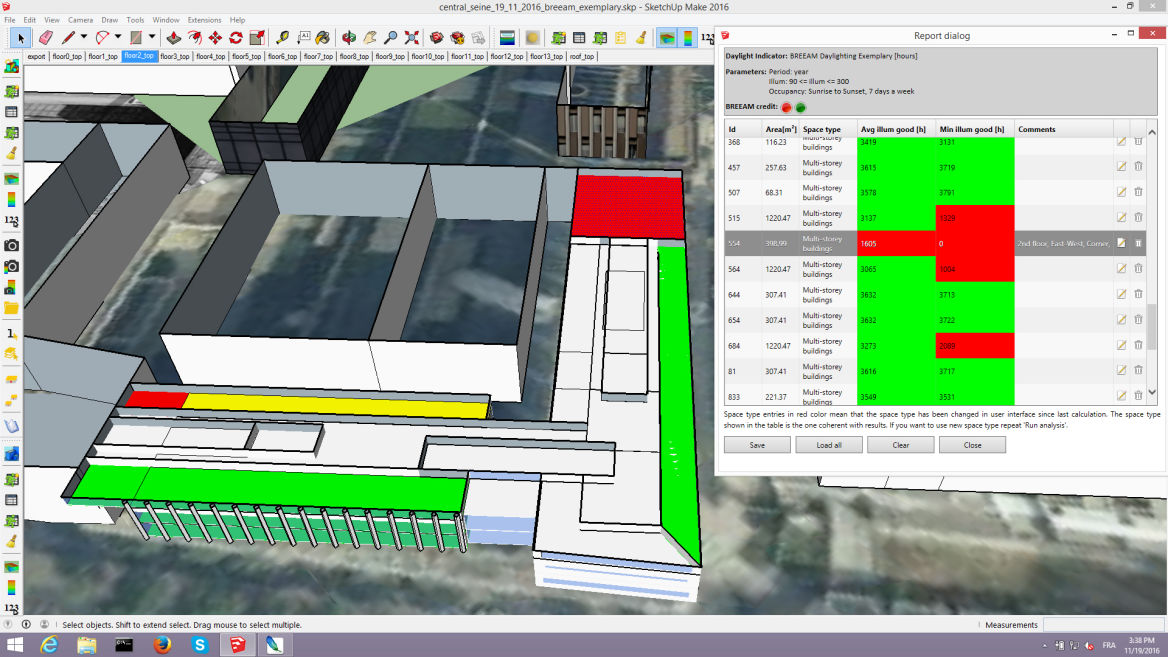
We simulate the spaces under study and compare the results to the requirements of sustainable assessment labels like BREEAM or HQE.
We take the spaces in all their complexity without simplification.
We establish the correspondance to the levels of the requirements as requested by the clients and defined in the certifications..
If the requirements are not reached, we propose improvements, simulate them and adapt them with the client until the requirements are reached.
We participate to the workgroup for the definition of visual comfort requirements for HQE.
Such interventions have been performed for office projects, universities, hospital, etc.
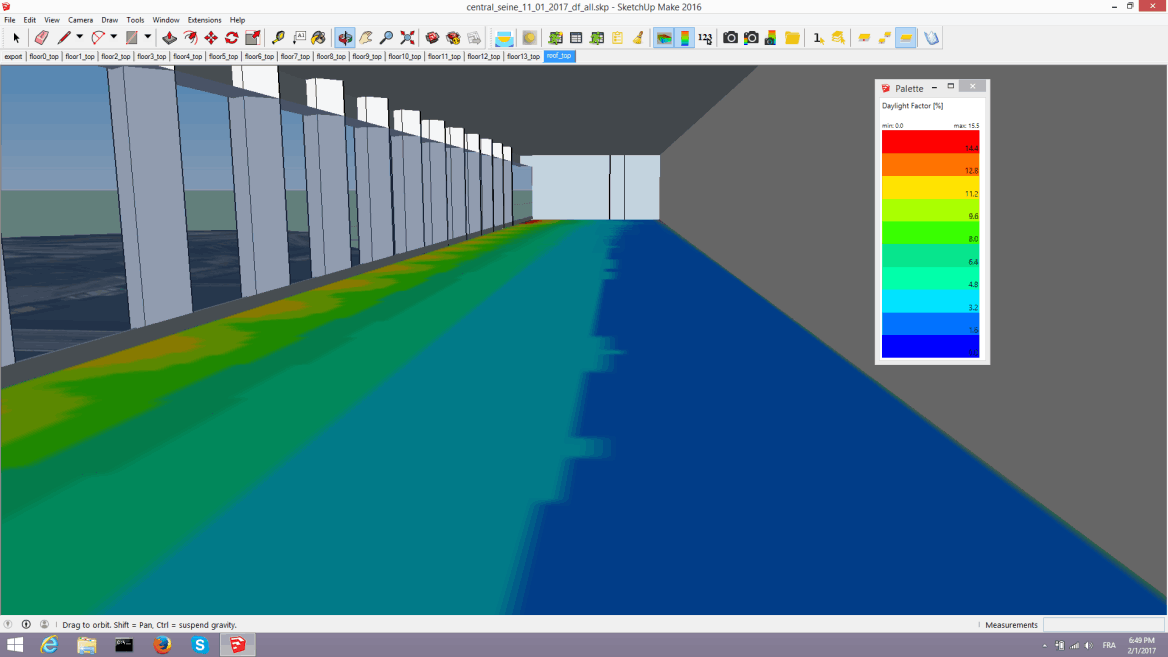
De Luminæ designed generalist simulation tools for daylighting which allow us to simulate all types of indicatirs for luminous ambience in daylighting.
Coming from several research projects, these tools help us to calculate classical indicators like daylight factor or autonomy but also specific indicators like DGP or specific indicators existing in local rules in various countries.
Also, in many building projects, indicators specific to the project are often demanded by the client. De Luminæ is able to evaluate these indicators whether they are in luminance or illuminance.
It allows De Luminæ to contribute to all types of projects.
De Luminæ worked on these kinds of expertise on schools projects, swimming pools or for local rules like in New South Wales or Norway.
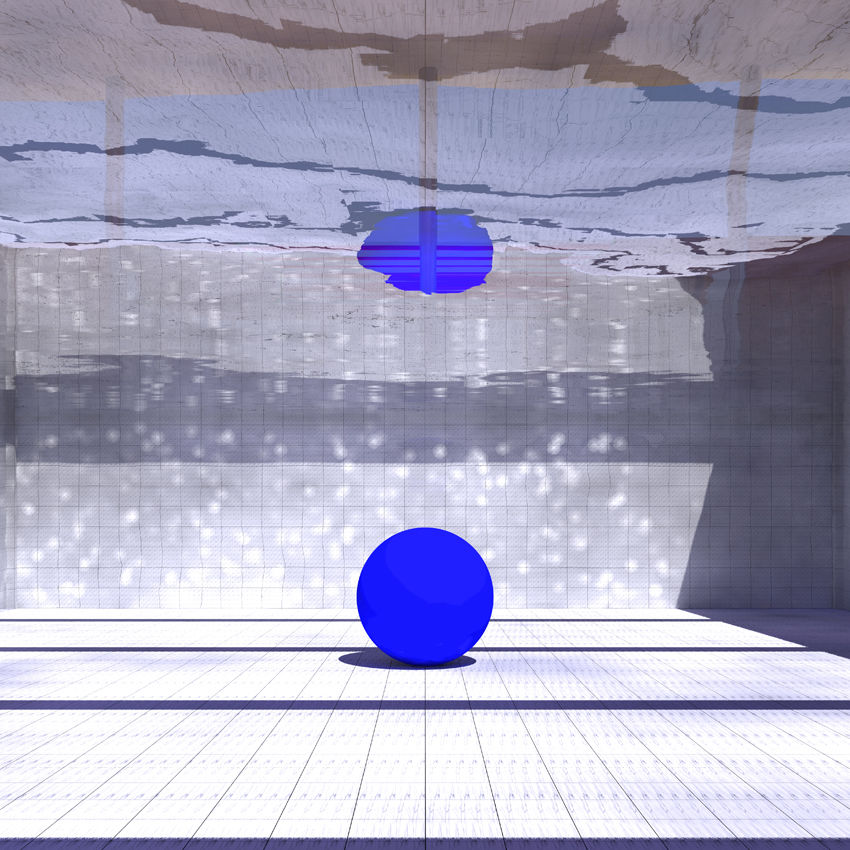
Many cases include particular materials or devices that cannot be studied or simulated via classical simulation tools.
We handle these situations using our expertise in the Radiance software which allows us to study all types of materials or devices.
It may be complex transluscent structures with several layers on the roof or the facades made of glazing or polycarbonates whose optical characteristics can only be taken into account with sophisticated simulation tools (for example silkscreens on facades for offices, transluscent roofs on museums, complex geometries for blinds, etc.)
On the image on the left, the simulation of a special case of water in a swimming pool and the effects of inter reflections, diffractions, etc.
Problem was there to simulate the effect of natural light on water for security question.
Reflexion on water and at the bottom of the pool can produce glare which would impair lifeguards' vision to see correctly people in water and hide dangerous situations.
The simulation of water is particularly tricky to produce scientific results (not only nice looking ones).
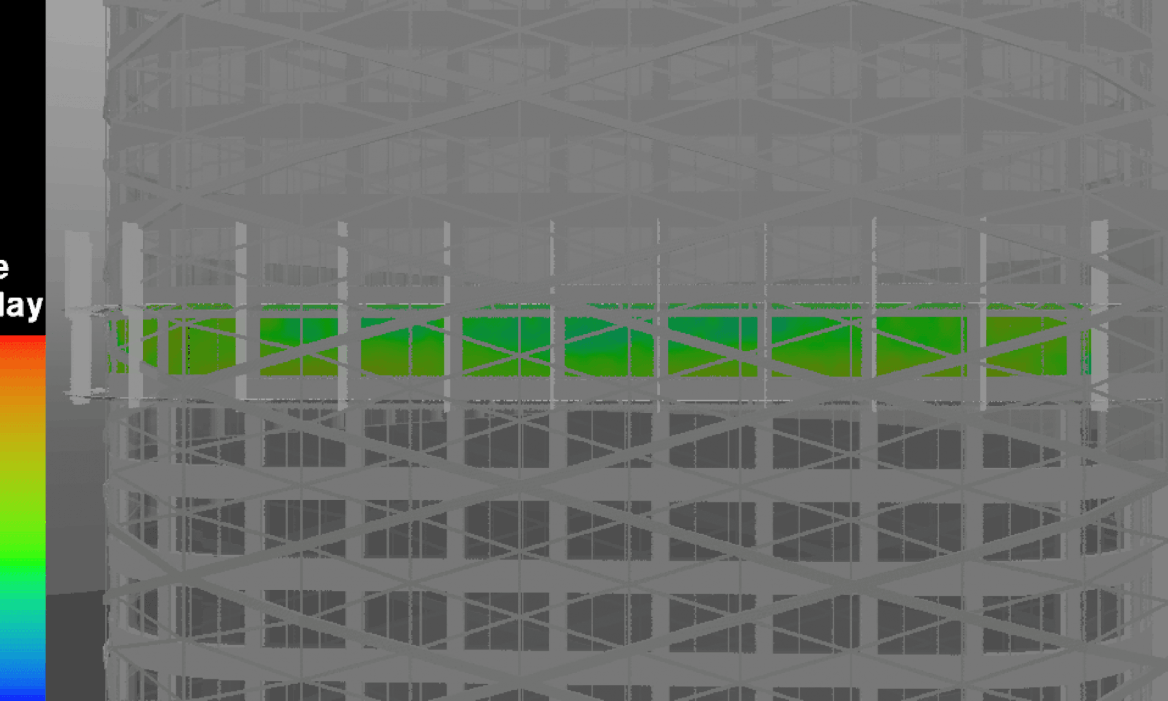
De Luminæ makes solar studies on architectural and urban projects.
De Luminæ studies how many hours on average the direct sunrays hit the project surfaces.
Beyond a simple view of shadows, we can use the climatic data of the site, the clear and overcast skies, and calculate for a precise date, a whole period or season.
These studies allow us:
- to identify glazed surfaces with risks of glare or overheat and that need protections
- to evaluate the efficiency of protections and to compare alternatives.
- to identify surfaces that may benefit from passive solar gains or from solar panels
- to help in the positioning of glazed surfaces depending on the direct sunrays
On the image on the left, the study allowed precise positioning and orientation of transluscent protections in order to protect the interior spaces from direct sunrays to avoid glare and overheat while letting the diffuse light enter.
De Luminæ made multiple expertise of this kind of various office projects, micro-urban areas, schools, etc.
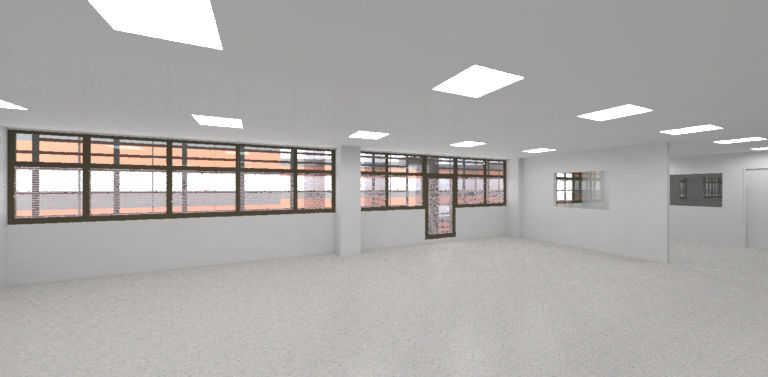
In addition to natural light, we can take into account the artifical lighting project..
To ensure the quality of the results, we model the existing luminaires from designers' catalogues.
De Luminæ can calculate the various indicators related to performance, comfort and pleasantness, along with more specific artificial lighting indicators like UGR as required by European norms.
It allows to reach a rational use of energy for lighting while respecting the requirements of visual comfort.
We can study artificial lighting alone, but also mixed lighting (natural and artificial together) on the basis of these analyses. This mixed lighting, rarely taken into account, is very present in the reality of projects and is particularly important for energy savings.
De Luminæ studied artificial lighting for office towers, schools, etc.
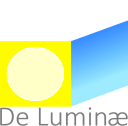
Natural light and its management in architectural and urban projects has a vital impact on lighting but also on several other technical fields. The luminous flux brings light but also heat. Glazed surfaces let the light enter but also have impact on acoustics. Openings impact the structure, etc.
Light is also a key element in architecture.
To allow balanced decisions in order to ensure a good equilibrium among the various technical fields but also with the architectural dimension, De Luminæ, thanks to its competences in the various technical and architectural fields can facilitate the definition of these balanced solutions that will preserve the architectural and technical qualities of the projects.
De Luminæ works in close relation with thermal specialists and facade designers whose concerns directly relate to the same objects of the projects.
Made with
No Code Website Builder